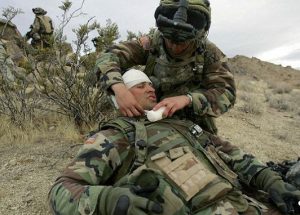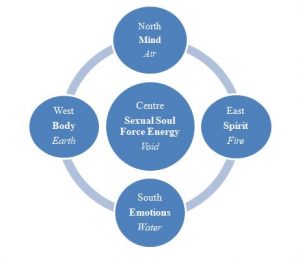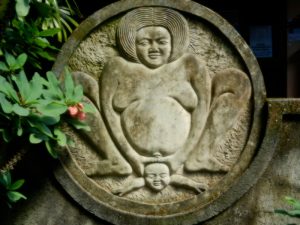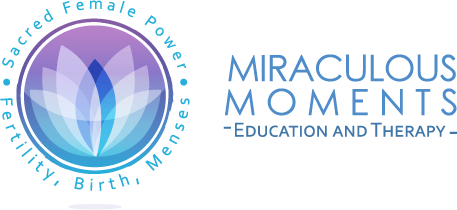Birth trauma is so common in our modern world that it’s accepted as ‘normal’. Yet it’s not normal, nor is it what nature intended. In the next three blogs, I’ll be unpacking the issue of birth trauma to shed some light on this distressing experience. In this blog, I provide a model to help you to understand why birth trauma is so deeply unsettling. In the next blog, I’ll share some inspiring stories of recovery from birth trauma drawn from my private practice as a hypnotherapist. And in the third article of this series, I’ll talk about recovering from birth trauma, what helps, how to find your way forward and how to find the silver lining.
In this blog, I want to offer some words of hope for women suffering from birth trauma. I want you to know that despite your shattering experience, there is a way out of that darkness. In fact, your heart-wrenching experience can be a rite of passage into some of the deepest mysteries of what it means to be female. And I promise you, there really is a silver lining.

https://www.dailymail.co.uk/sciencetech/
When I think of women traumatised by their birth experiences, it reminds me of warriors lying on a battle-field, shell-shocked and shaken to the core. They’ve survived the carnage, only to discover that their previous worldview and sense of self have changed completely. Their words echo the descriptions of soldiers returning from war zones, who have witnessed horrors that have changed them forever but are incommunicable to family and friends.
Women traumatised by birth are expected – and often expect themselves – to immediately begin the work of mothering. Yet like an injured soldier, those mothers first of all need to be supported, and their ‘war’ wounds validated and acknowledged, before they begin the journey of recovery into confident mothering.
Trauma does not have to mark us permanently. As human beings, we’re wonderfully adaptive and like other species on the planet, we’re designed to endure and recover from traumatic events. In fact, we possess an organic, genetically encoded restorative capacity within our body that enables us to heal from trauma completely. In the third part of this series, I describe this natural capacity more fully.
Right now I want to share with you a model of the human person that enables us to appreciate why the experience of birth trauma is so profoundly disorienting and destabilising, and also why it has such tremendous potential for transformation. This model, which takes the form of a medicine wheel, comes from a Native American tradition.1 Each aspect on the wheel corresponds to a different direction (south, west, north, east & centre) and each direction is associated with a different element from nature (water, earth, air, fire & void). See diagram below.

In this tradition, it’s believed that human beings experience the natural elements in the following way: emotion = water; the body = earth; the mind = air; the spirit = fire; and our sexual soul force energy = the void. The teachings describe the function of the different dimensions of our humanity as follows: emotions flow, the body holds and transforms, the mind receives, the spirit takes determinative action, and our sexual soul force energy, which is right at the centre, is the catalyst for all the other dimensions.
In this model, our sexual or soul force energy is like a fulcrum upon which all the other elements of our humanity depend. As the animating core, it “literally catalyzes our life and sparks all other aspects of ourselves, giving us our identity as human beings.” 2 With this model, we can begin to appreciate how profoundly our sexual soul force energy is impacted by birthing.
Giving birth is a quintessential female sexual experience during which the life force is powerfully evident. It’s the sexual energy that begins the baby at conception and it’s the same energy engaged during birth. All the other aspects of our humanity are also significant at this time. The mother’s emotional state plays a crucial role during labour; fear, for example, can cause the whole process to shut down. The body obviously participates very intensely and actively. A labouring woman’s mindset and that of her caregivers can significantly shape the birth experience. And her spirit, her determinative action, can make a huge difference to the outcome. However, all these aspects which sit at the circumference of the wheel are catalysed by what is at the centre: a woman’s sexual soul force energy. This is the primary driver which activates and integrates all the other dimensions.

Birth is a threshold or transitional state that bridges visible and invisible worlds. During birth, a door is opened into the integrative core at the very centre of our being. What’s accessed through that doorway is both personal and transpersonal: personal because our core is the seat of our identity, yet transpersonal because we are exposed to the raw, primordial energy of Life itself.
In some Eastern traditions, the Void is seen as the womb of the Universe from which everything in creation emerges. During my PhD research, I was privileged to hear birth stories that bore witness to this phenomenon – women describing their births as orgasmic, bliss-filled experiences of oneness with the Universe that transformed their sense of self.
However, by the same token, this powerful threshold experience also holds the potential to be truly devastating because of its deep access into our integrative core. The above model enables us to appreciate how extremely vulnerable women and babies are during labour and birth. Caregivers’ words, looks, gestures, attitudes and behaviours can penetrate deeply, with repercussions far beyond what would normally be the case.
During labour and birth, trauma can come in the form of an unexpected complication, potentially life-threatening. It can come from medical interventions that are sometimes necessary and sometimes unnecessary. Trauma can come from feeling like your birth has been taken out of your hands and all the decision-making power rests with other people. It can come from feeling like your body is being treated like a thing, rather than your most intimate self. And even a birth that seems straightforward on paper can still be experienced as traumatic because of what a woman confronts within her own self. A birth is traumatic if it’s experienced by the woman as traumatic.
 Trauma experienced at such a fundamental level can be felt as catastrophic, literally soul-destroying. As a consequence, the sexual soul force energy, which catalyses all our other aspects and gives us our identity, is disrupted and thrown out of balance; the axis of the world begins to wobble. This is why the experience of birth trauma is so profoundly disorienting and shattering.
Trauma experienced at such a fundamental level can be felt as catastrophic, literally soul-destroying. As a consequence, the sexual soul force energy, which catalyses all our other aspects and gives us our identity, is disrupted and thrown out of balance; the axis of the world begins to wobble. This is why the experience of birth trauma is so profoundly disorienting and shattering.
The medicine wheel also enables us to see why crimes like rape or childhood sexual abuse are so violating; they strike to the core of our being, provoking deep, enduring feelings of shame, guilt, anguish and loss of a felt connection to oneself. Women sometimes describe birth interventions as being akin to rape. While it may have been just another day at work for hospital staff, a traumatic birth is something that can continue to affect a woman for years, even decades to come. It’s often the beginning of a deep soul-searching, in which she looks for a way to call back to herself what was lost during labour and birth. In a very real sense, this is a work of soul retrieval. The result is not a reassembling of the person who began the journey, but rather a transformation of identity, the becoming of a wiser, more compassionate person.
In my practice as a hypnotherapist, I’ve been privileged to support many women to negotiate this passage of recovery after birth trauma. I’ll be sharing some of their stories in the next blog, so stay tuned. Just know that if you’ve experienced birth trauma, it’s not a life sentence. There is a way out.
References
- Reagan, Harley Swift Deer. (1994). Shamanic Wheels and Keys, Vol. 1. Deer Tribe Metis Medicine Society, Phoenix, USA.
- Thunder Strikes & Orsi, Jan. (1999). The Song of the Deer: The Great Sun Dance Journey of the Soul. Prism Productions, Scottsdale, AZ, USA. pp.196.

